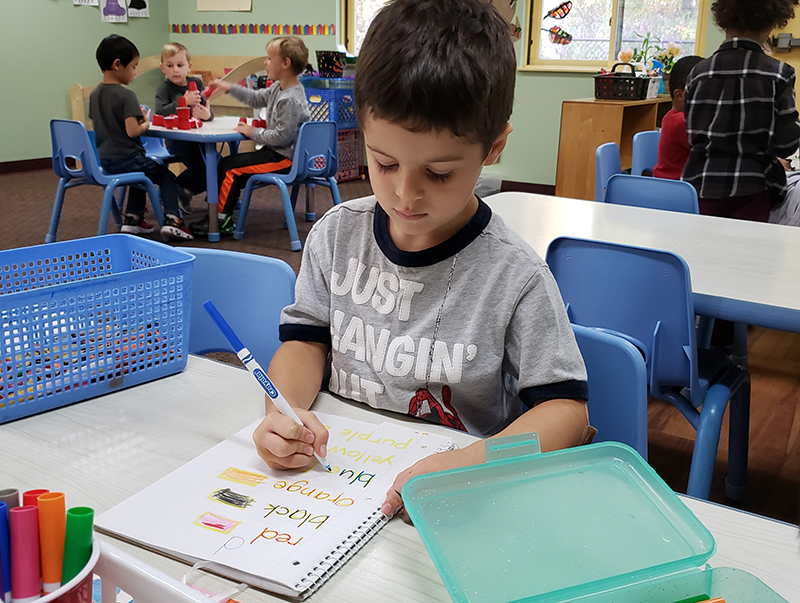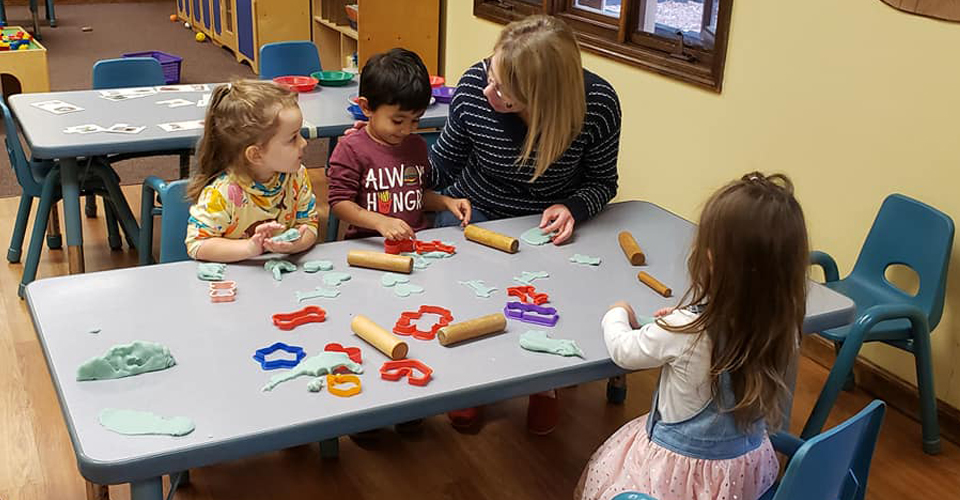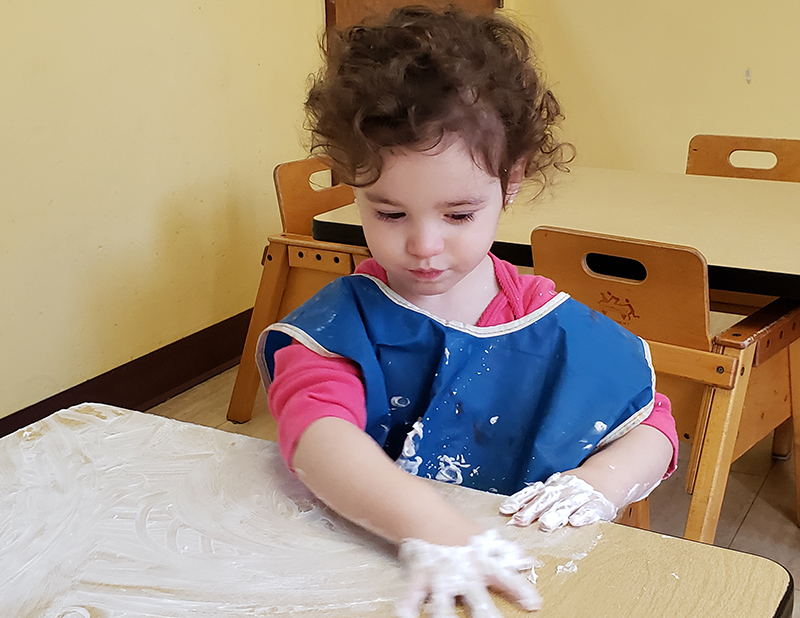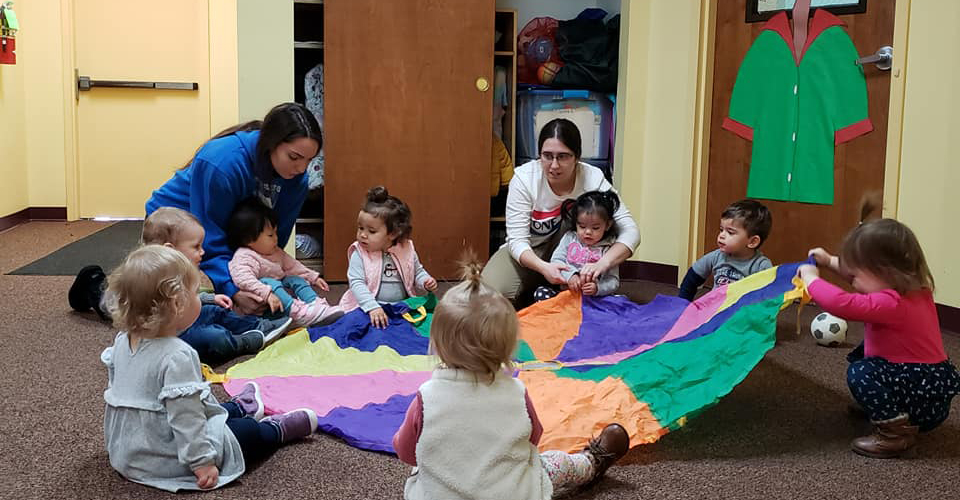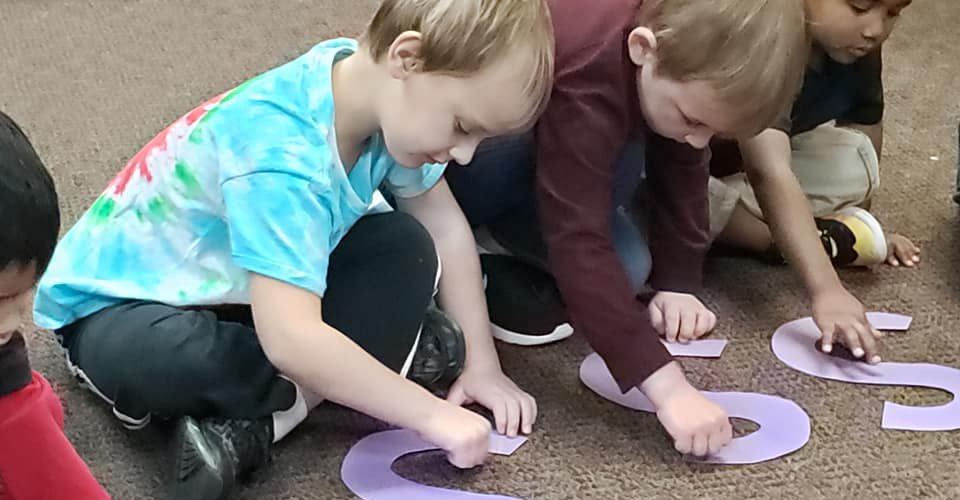Curriculum
Pre-School/Pre-Kindergarten Curriculum
We believe that three and four year old children are naturally curious and playful. They learn best when they explore and play, involve their senses, manipulate real objects, work together with adults and children, make meaningful plans and decisions, see the results of their actions, and build upon what they already know. Our curriculum is designed to allow children to be an active participant in the learning process.
Literature Based Curriculum
We use children’s stories, introduced during morning circle time, to provide the theme from which a variety of activities will be introduced throughout the day. Children may learn about a particular author by reading a variety of his books over a period of a week or more. Or they may explore a certain topic or concept by reading books from multiple authors.
One author the children will explore is Eric Carle. After reading and discussing a book with the children, a variety of activities can be incorporated into the learning centers within the classroom. Some of the books used may include: The Very Hungry Caterpillar, The Very Busy Spider, The Tiny Seed, The Honeybee and the Robber. Each book offers a treasure of activities that can be extended into all areas of the curriculum. Math, language, science activities all spring naturally from the themes of these books. After reading The Very Hungry Caterpillar the children can create number books using different items for each number. Another math project would be counting out one strawberry, two blue berries, etc, and then eating the results for snack. The Very Busy Spider could include introducing the rhymes Little Miss Muffet and the Eeensy Weensy Spider during circle time. Activities around The Tiny Seed would include examining and comparing different seeds, and growing plants from seeds.
Exposing Children to Reading
The best way to enable children to become competent and passionate readers is to expose them to books early and often. We do this throughout the day at Cinnamon Tree. During circle time the stories that form the basis of many of the days activities are read and discussed.
Books are on display and readily assessable in all the classrooms. We start in our infant class, it’s never too early to imprint on children the wonder of reading. Infants enjoy the cuddling time with the teacher as they appreciate the pictures and the rhythm of the story. At circle time, toddlers listen intently and comment continuously as big books are read and flannel board stories are acted out. During activity time in a toddler class it is common to observe a toddler grabbing a cardboard book, backing into a teacher’s lap, and settling in for a private story time. These activities continue in the three and four year old classes. Additionally, these classes enjoy quiet ‘reading’ times and begin the process of creating their own stories.
Language Experience Activities
Children’s readiness skills are enhanced by helping them see the connections between the spoken word, the world around them and the written word. We do this using a variety of activities.
Name Games
The first word children want to learn is their own name. We write their name on all of their art work, naming each letter along the way. The children find their place for snack and lunch by looking for their name. Name tags are used for picking classroom jobs. Children love to spot their classmates name as well as their own.
Special Words
Every day each child has the opportunity to add a word to his word bank.Each word is written by the teacher on a 3 x 5 index card. The key feature of this approach is that the word is unique to each child and comes from his own experience and interest. In this way the child begins to see the relationship between his ideas thoughts, ideas and feelings and the written word. As he/she builds up a list of words there are many games he /she can play using these words – which words begin with the same letter/sound, which words begin with a capital letter, placing words together to make phrases.
Dictated Stories and Experience Charts
Dictated stories and experience charts are two additional activities that can help children to see their experiences, ideas and oral language expressed in the written word. For example, a child may draw a picture after listening to a story, hearing from a special guest or participating in a classroom activity. The child will then dictate a story about his/her picture to the teacher.
With an experience chart the teacher will work with a small group of children or with the entire class. As with a dictated story an experience chart activity can evolve from reading a children’s story or a classroom activity or it can be a thank you note from the entire class to that special guest. It could also be about a special holiday (Mother’s Day) or just a funny story.
Labels
Children love labels. They enjoy making the connection between the objects in their world and written names for these objects. One of the first “reading” task that a child accomplishes is when he/she proudly names one of the many labeled items in his/her world – “Toys R US”, “Stop and Shop”,etc. We label items throughout Cinnamon Tree to take advantage of this natural curiosity.
